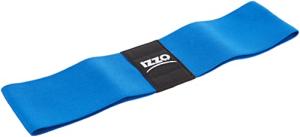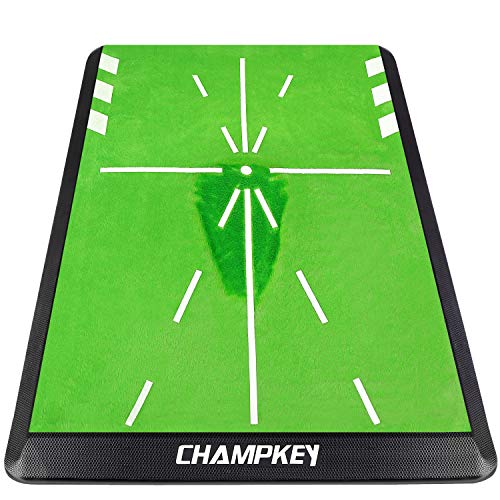A Closer Look at the Amy Sport Golf Swing Training Aid Wrist Hinge Adjustable Arm Band with Smartball Connection
If you're a golfer—whether a weekend warrior, a dedicated range rat, or just someone trying to improve their consistency—chances are you’ve looked into training aids. The Amy Sport Golf Swing Training Aid is one of those products that promises to improve your mechanics in a meaningful way. Marketed as a multi-part swing correction system, it includes a wrist hinge trainer, adjustable arm band, smartball connection band, and a practice ball for between-the-arms drills. This review examines its practical effectiveness, comfort, usability, and whether it genuinely improves your golf swing.
First Impressions & What’s in the Box
The Amy Sport training aid comes in a compact, neatly organized package. You’ll find:
-
A wrist hinge aid (clips onto your forearm and club),
-
An adjustable arm band to connect the biceps,
-
A hanger-style smartball connector,
-
A ball that fits between your forearms during swings.
Right away, the value proposition is obvious—this isn’t a one-trick tool. It’s a modular system that lets you work on different aspects of your swing: wrist hinge, arm connection, and swing plane consistency.
Everything feels lightweight but durable. The materials aren’t premium-grade, but they’re perfectly adequate for training use, and the adjustable Velcro straps are surprisingly secure.
What Does It Do?
The purpose of the Amy Sport Training Aid is to promote proper swing mechanics, specifically:
-
Correct wrist hinge and lag,
-
Better synchronization between arms,
-
Preventing "flying elbows" and disconnection,
-
Training muscle memory for a compact, repeatable swing.
It's designed to build muscle awareness so your arms, hands, and body move in harmony.
Breaking Down the Components
1. Wrist Hinge Trainer
This piece is designed to help with creating and maintaining lag in the downswing, one of the most essential power moves in golf. The wrist hinge trainer attaches to the forearm and rests near the grip of your club.
Pros:
-
Encourages a proper wrist set at the top of the backswing.
-
Helps eliminate early casting or "scooping" at impact.
-
Immediate feedback—you feel it when your hands break down.
Cons:
-
It may feel awkward at first.
-
Not one-size-fits-all: golfers with thicker arms or distinct swing styles may need to adjust their expectations accordingly.
2. Adjustable Arm Band
This piece connects both arms and is meant to keep your elbows together, promoting a one-piece takeaway and follow-through.
Pros:
-
Great for curing "chicken wing" or flared right elbow.
-
Reinforces keeping arms connected to the torso.
-
Adjustable fit works for most arm sizes.
Cons:
-
It can feel restrictive if you're not used to it.
-
It may initially interfere with natural motion, especially for players with unique swing styles.
3. Smartball Connection Band + Ball
This is the “ball between arms” drill popularized by many tour pros and instructors. It promotes synchronization of arms and body rotation.
Pros:
-
Promotes a tight, controlled arm motion.
-
Forces the player to rotate the body, not just swing arms.
-
Can be used for full swings, chips, and pitches.
Cons:
-
The ball may slip during full swings if not secured tightly.
-
Harder for beginners to use correctly without guidance.
Ease of Use
This training aid is relatively easy to set up, though first-time users may need 5–10 minutes to figure out how to strap everything on correctly. There are no instructions included in the box, which is a downside, but several tutorials are available online, and a bit of trial and error goes a long way.
Using the components one at a time makes it easier to focus on specific swing faults. For example, you might use only the wrist trainer one day and the smartball setup the next.
For best results, try it during slow-motion practice swings, mirror drills, or use it in conjunction with a launch monitor or video camera.
Who Is It For?
This tool is best suited for:
-
Beginner and intermediate golfers are trying to build a sound swing foundation.
-
Golfers are working on consistency and body-arm synchronization.
-
Players with wrist breakdowns, disconnection, or casting problems.
Advanced players or those with established swings may not benefit as much, unless they're specifically rehabbing a motion or making significant changes.
Benefits You Can Expect
-
Better Wrist Hinge and Lag
Developing a correct wrist hinge helps generate power, and the wrist aid keeps you from “flipping” at impact. -
Improved Arm Synchronization
Keeping the arms working together eliminates the all-too-common swing disconnection. -
Increased Body Awareness
These aids build “feel.” You’ll know when your arms are flaring or wrists breaking down. -
Quicker Improvement in Practice
Drills with this tool yield faster feedback compared to just hitting buckets of balls blindly. -
Good Portability
Everything is lightweight, compact, and easily fits in the side pocket of your golf bag.
Potential Downsides
-
Learning Curve
If you’re new to swing trainers, it might take some time to understand how to use each part effectively. -
Comfort
The wrist trainer, in particular, can feel uncomfortable after extended use, especially if not positioned correctly. -
No Instruction Manual
While not a deal-breaker, the lack of clear guidance means some users might use the aids incorrectly at first. -
Not Ideal for Every Swing Style
If you have an unorthodox swing that works for you, this may feel like it’s forcing a model swing that doesn’t suit you.
Common Questions Answered
Q: Can this be used by left-handed golfers?
Yes! The training aid is symmetrical and adjustable, so it works for both right- and left-handed players.
Q: Can you hit real golf balls while wearing it?
You can hit real balls, especially with the arm band and smartball, but full swings with the wrist hinge aid are best done slowly or at half speed, especially early on.
Q: Is it helpful for kids or juniors?
Yes, although smaller junior players may need help adjusting the straps. It's a great tool for building good habits early.
Q: How long should I use it in a practice session?
Start with 10–15 minutes per session, focusing on slow, deliberate swings. Overuse can lead to fatigue or poor habits if done too quickly.
Q: Is this better than other training aids like the Tour Striker Smart Ball?
It depends. The Amy Sport aid offers multiple tools in one package, making it more versatile and cost-effective. However, premium tools like the Tour Striker Smart Ball may offer better materials and comfort.
Verdict: Worth It or Not?
The Amy Sport Golf Swing Training Aid offers a ton of value for its price. It's a multi-functional tool that helps golfers work on multiple swing issues, including wrist hinge, arm connection, and synchronization. While it isn’t perfect—it lacks detailed instructions and may not fit everyone perfectly—it delivers noticeable improvement when used properly and consistently.
If you're serious about improving your swing and you don’t want to spend hundreds on private lessons right away, this is a great option. Think of it as a portable coach that keeps you honest about your form.
Final Rating: 4.5 out of 5 Stars
-
Pros: Versatile, effective, great value, portable, multi-faceted training.
-
Cons: Some discomfort, no instructions, and minor fit issues for some users.






